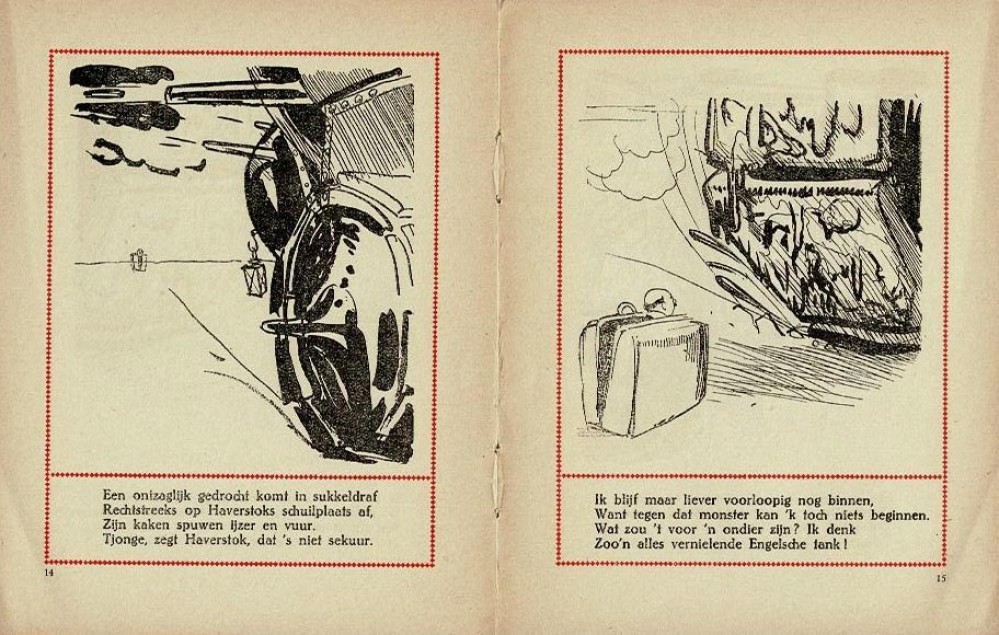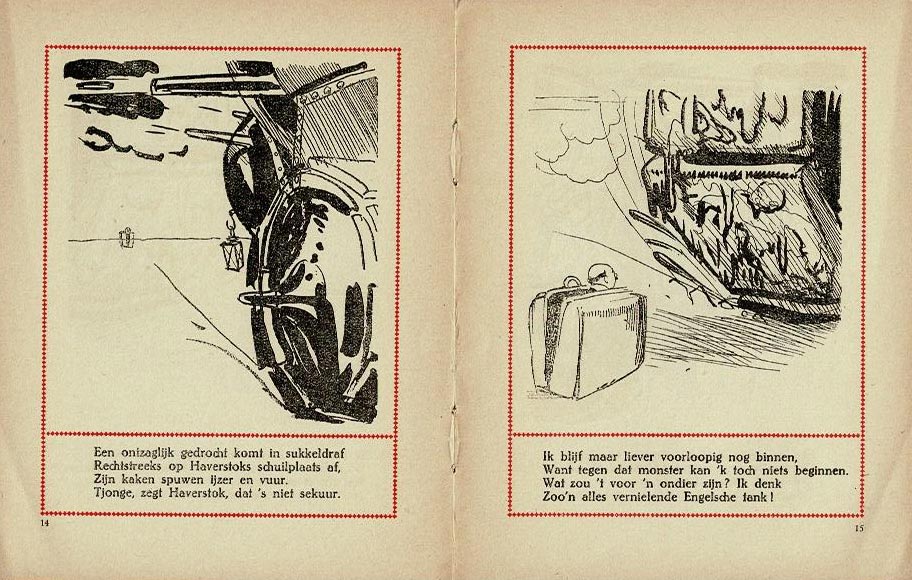'Het Avontuur van Haverstok met den Koffer van Verweegen en Kok', 1917.
Henri van de Velde was an early to mid-20th century Dutch painter, illustrator and graphic artist, notable for the unusual advertising comic 'Het Avontuur van Haverstok met den Koffer van Verweegen en Kok' (1917). A member of artists' societies like St. Lucas and Arti et Amicitiae in Amsterdam prior to World War II, he was mostly forgotten after the Liberation, largely due to his affiliation with the Dutch Nazi party. Henri van de Velde should not be confused with the Flemish painter Henry Van de Velde (1863-1957).
Early life and career
Hendrik van de Velde was born in 1896 in Amsterdam. He studied arts in Munich, Paris and Florence, and was an apprentice of the Dutch painter H.M. Krabbé. During his lifetime, Van de Velde successively lived and worked in Amsterdam, Laren, Blaricum, Amsterdam again, Vreeland and finally Abcoude.
Haverstok
In 1917, Van de Velde was the artist behind the advertising booklet 'Het Avontuur van Haverstok met den Koffer van Verweegen en Kok', by commission of suitcase supplier Verweegen en Kok in the Kalverstraat in Amsterdam. The book features a comic strip about a war correspondent heading for the battlefields. His subsequent adventures in the war zone are testimonials of the durability of his suitcase, which, of course, was supplied by the company concerned. The texts in rhyme were written by J. Siedenburg, a writer from Blaricum. The booklet wasn't the first appearance of mister Haverstok. In 1912, the character had already made its debut in a similar booklet, written and drawn by Ko Doncker.
'Een Avontuur van Haverstok'. Book cover.
Other work
In 1927, Henri van de Velde illustrated the book 'De Zoon van den Hongaar' by L. Dorsman, published by A.D. Schoonderbeek in Laren. Eventually focusing on painting, he started out as mainly an animal painter, but he eventually gravitated towards symbolism. Van de Velde's paintings often featured Biblical and mythological figures.
Nazi collaboration
Henri van de Velde's sympathies for Nazism before and during World War II has largely overshadowed his artistic legacy. A traditional artist, he was strongly opposed against contemporary and experimental artforms, supporting the Nazi actions against artists of so-called "Degenerate art". Van de Velde became a member of the Dutch national-socialist party NSB, and gained notoriety for his paintings 'De Nieuwe Mensch' (1939) and 'Engel der Gerechtigheid' (1942), which promoted the national-socialist ideals. Especially 'De Nieuwe Mensch' was often used for propaganda purposes. The original painting hung on the wall of the Utrecht office of Dutch national-socialist leader Anton Mussert. Since 2007, it has been in the collection of the Rijksmuseum in Amsterdam. However, the museum chose not to show the controversial work in its permanent exhibition.
Final years and death
After the Liberation of the Netherlands (1945), Henri van de Velde was arrested and imprisoned in Kamp Amersfoort. He was conditionally released in 1946, and his sentence was converted into a definitive release in 1948. Although he continued to paint after the war, Van de Velde was largely ignored by the art world and forgotten by the general public. He passed away in Abcoude in 1969, at the age of 73.
Self-portrait (1931)





